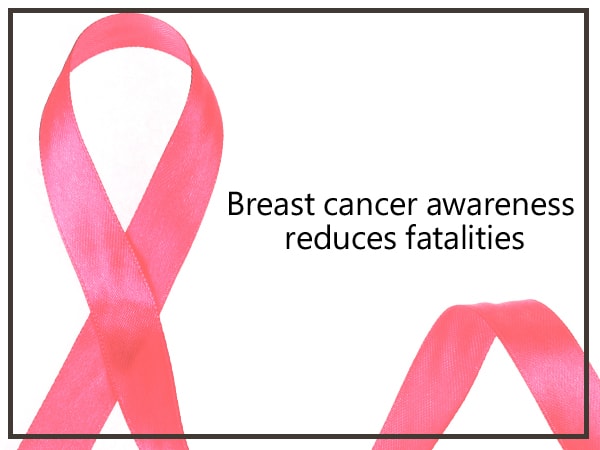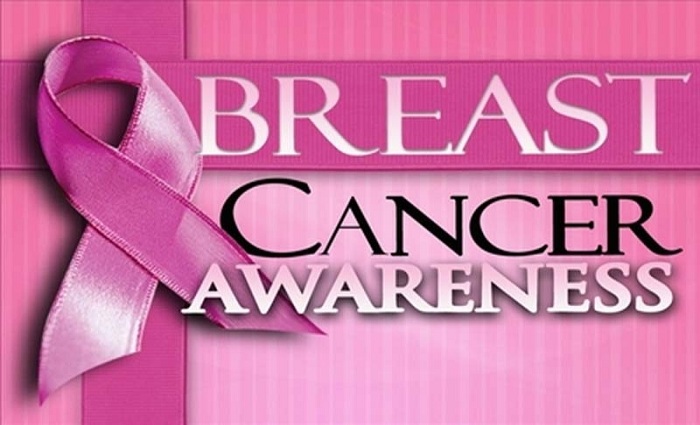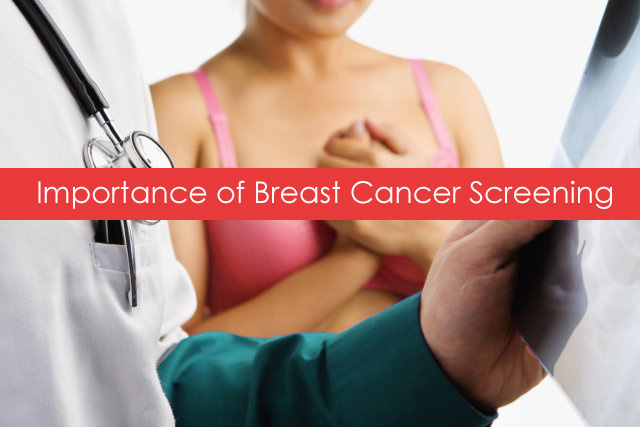
Posted in: Breast Cancer Treatment by Dr. Tarang Krishna Posted Date: 25 Jun, 2020
Breast cancer is among the most prevalent cancers. Almost 1 in 8 women are likely to develop breast cancer. European countries such as Belgium show the highest rate while Asian countries like China and Japan have a relatively low rate. America and Europe show20-25% average mortality due to breast cancer. In comparison, Asian countries have a rate of 6-7% .
To tackle a huge number of deaths, it is vital to look for early symptoms of breast cancer. Time is of the essence here. Any lapse can change the treatment outcomes. You must act fast because the early detection of breast cancer makes it curable.
Your oncologist would know how to identify breast cancer. To avoid misjudgement, your oncologist will recommend a series of tests for breast cancer to help detect any early symptoms of breast cancer. A patient may visit the doctor after discovering a lump during self-examination. Sometimes, they may notice mass under the arm or red swollen breasts. The early signs of breast cancer pictures will show abnormal mass or calcification on the mammogram screen.
In the past, only biopsy would declare a cancerous growth. But, now there are several tests to confirm the diagnosis and learn more about the condition.
Types of Breast Cancer Tests
An oncologist will ask you to go through some tests for effective breast cancer diagnosis. A breast cancer test can help the doctor identify the stage of cancer and prescribe accurate treatment.
Following are some of the tests that an oncologist will advise for breast cancer.
1. Tests Using Imaging
Recommend that to get accurate pictures of any suspicious growth in and around the breast, we get the Imaging test done.
These can help see the problem with the latest technology.
- Ultrasound: Sound waves help differentiate between a fluid-filled cyst and a solid lump. This solid mass may be cancerous growth.
- Diagnostic Mammography: This is slightly different from normal screening mammography. It takes more pictures of the suspicious area when a primary screening is worrisome.
-
MRI: MRI depicts the spread of breast cancer that is already diagnosed. It is also used to screen women who are at a high risk of developing breast cancer. In this test, a special dye is injected into the vein of the breast. Then the magnetic fields of the machine produce detailed pictures of the body.
2. Biopsy Tests
Biopsy Test is the most reliable and basic test to confirm cancer. Here a pathologist analyses a small amount of extracted tissue from the alleged mass. This test is more accurate than other cancer tests. There are various types of biopsy tests based on different techniques of sample collection.
- Core Needle Biopsy: A wide needle extracts a large amount of tissue for analysis. Local anaesthesia helps the patient to block any related pain and discomfort in the procedure. The medical team prefers this technique to check cancer suspected during physical or imaging tests.
- Fine Needle Aspiration Biopsy: Unlike the core needle, this test uses a very fine needle to extract a small amount of sample tissue. This is less painful.
- Image-guided Biopsy: Imaging techniques guide a fine or core needle into the abnormal lump for tissue extraction. It may also use the vacuum-assisted process of extraction. After extraction, surgeons attach a small titanium clip at the area to help identify or future surgery, if needed.
- Surgical Biopsy: Surgeons perform this on an extracted large mass or the complete tumour. Only confirmed cases of breast cancer should have extraction of tumour. Therefore, this test is not recommended for breast cancer.
- Sentinel Lymph-node Biopsy: Breast cancer tends to extend towards the lymph nodes under the arms. This procedure finds out if the spread has reached the lymph nodes. A dye or radioactive tracer helps in identifying the sentinel lymph node so that the pathologist can extract and analyse.
3. Genomic Tests
Experts perform genomic tests to predict the recurrence of breast cancer after symptoms of breast cancer stage 1 are noticed. They may also foresee recurrence or metastasis after treatment. Here pathologists look for specific genes or proteins found in cancer-cell genes.
The positive news is that accurate advice helps many patients avoid unnecessary treatments and their side-effects. Also, pathologists conduct the test on the sample or tumour already taken. So, no need for extra tissue extraction. Categories of genomic tests are as follows.
- MammaPrint: This is the advised test for HER2-negative patients with either or both ER-positive and PR-positive, but less than 3 lymph nodes affected by cancer. Information from 70 genes will predict if early-stage breast cancer is likely to return. Based on this result, doctors can decide on chemotherapy treatment.
- Breast Cancer Index: HER2-negative patients with either or both ER-positive and PR-positive with no spread to lymph nodes go through this test. The results help doctors decide on long-term hormone therapy.
- Oncotype Dx: Again HER2-negative patients with either/both ER-positive and PR- positive with no cancer in lymph nodes take this test. This looks into 16 cancer-cell genes and 5 reference genes to estimate recurrence up to 10 years afterearly symptoms of breast cancer. The doctors may decide on the need and combination of hormone therapy and chemotherapy for treatment after this check.
A low score is treated with hormone therapy and high score with chemotherapy added to hormone therapy. For patients less than 50 years, up to 16 is a low score, 16-30 is medium and 31 and above is high. For patients older than 50 years, up to 26 is a low score, 26-30 is medium and above 30 is a high score.
- FISH Test: FISH (Fluorescence in situ hybridization is a technique that involves the use of fluorescent probes that connect to the specific chromosome sites having a high degree of sequence complementing the probes.
- Other Tests: Doctors consider tests such as EndoPredict, PAM50 and uPA/PAI to know about the chances of spread of cancer and its metastasis.
All these tests fail to show conclusive results for HER2-positive patients or triple-negative patients.
4. Blood Marker Tests
- Your doctor may advise additional blood tests for breast cancer before or after surgery. This will include a general blood count and screening for virus-induced changes in the body.
- CBC: A Complete Blood Count gives the number of different types of cells in the sample fluid and their percentage. This ensures that your bone marrow is working fine.
- Blood Chemistry: This test will assess if your liver and kidneys are working in optimum condition.
- Tests for Hepatitis: Active Hepatitis infection interferes with cancer treatment. Suppression of the Hepatitis virus is mandatory otherwise due to chemotherapy, the virus can grow and cause liver damage.
How is Biopsy Sample Analysed?
The team of experts that includes an oncologist and a pathologist know how to read the test results and how to detect breast cancer. Analysing biopsy samples is by far the most important part of a breast cancer diagnosis. The pathological team will look for the following features to plan the treatment advice.
Features of a Tumour: Your doctor needs to check on cancers that are invasive or in-situ, ductal or lobular and present in lymph nodes. Margin width, edges of the tumour and its distance from the core tumour is also an important feature.
Grade of the Tumour: Doctors analyse the growth rate of cancer cells and their appearance compared to normal cells. There are three grades – poorly differentiated, moderately differentiated and well-differentiated.
Molecular Testing: Advanced molecular testing becomes necessary for advanced or metastasised cancers. The expert checks for specific proteins and features in the sample tumour tissue. Some of these are – PD-L 1, MSI-H, dMMR, NTRK or PI3KCA.
Estrogen and Progesterone Receptor Tests: An ER-positive and/or PR-positive patient is usually given hormone therapy. Doctors recommend a combination of other features to decide any further advice.
HER2: This test is for invasive cancer. Experts consider drugs that target the HER2 receptor such as Trastuzumab based on the results of this test. HER2 results are never ambiguous i.e., they are either positive or negative. Despite repeat testing, if the result turns inconclusive, your doctor will take a call on the best treatment.
All the above test results assist your doctor in precisely describing your cancer. This method is also called staging. Your doctor will recommend treatment and further screening based on the staging. Your doctor can figure out the outcome of your disease.
Stages of Breast Cancer
Breast cancer stages start from 0 to IV, starting with non-invasive going up to invasive that has spread beyond the breast tissues. TNM staging system is the name for stages of breast cancer.
- The T stands the size of the tumour and whether it has spread in the nearby tissue.
- N displays if there is cancer in the lymph nodes.
- M stands for metastasis i.e., if cancer has spread to other parts of the body.
The AJCC has clear instructions about how to check for breast cancer. The AJCC or American Joint Committee on Cancer is a group of experts which oversees how doctors communicate about cancer all over the world. In 2018, the AJCC included the other above-mentioned tests along with TNM for complete accuracy at staging. This accurate scoring is also quite complex. But, the results from the treatments speak volumes.
Various other words are also used for staging. You may hear terms like – local, regional, distant, locally advanced, regionally advanced etc. The term local means restricted to the breast whereas regional means cancer extended to the armpits and distant is the cancer that has spread to other body parts. Again ‘locally advanced’ means a tumour on the breast tissue is large and multi-layered.
The complex but accurate staging process has improved diagnosis and treatments. This also includes the limit on side-effects and recurrence. The stages are divided broadly into five categories.
- Stage 0
This is non-invasive breast cancer. The breast cancer symptoms’ images do not show any abnormal cells growing beyond the area of the cancer tumour. Ductal carcinoma in situ is a good example.
- Stage I
This is the first starting point for invasive breast cancer. This means the cancer cells are breaking into surrounding tissues. This stage is sub-classified into IA and IB.
IA is the stage where the tumour is about 2 centimetres but no lymph nodes are affected.
IB is where there may or may not be small malignant tumours in the breast but there are small tumours on the lymph nodes.
If the tumours are ER-positive and PR-positive, they may be staged as IA.
- Stage II
Here you have a higher degree of invasive breast cancer. This is subdivided into IIA and IIB.
IIA is when either there is no tumour in the breast tissue but there are tumours present in axillary lymph nodes or lymph nodes near the breast bone;
Or tumours measuring up to 2 centimetres with smaller tumours affecting axillary lymph nodes;
Or no tumours on axillary lymph nodes but tumour on breast tissues measures between 2 to 5 centimetres.
IIB is when either the tumour is of size more than 5 centimetres but has not spread to lymph nodes;
Or the tumour in the breast is between 2 to 5 centimetres but up to three small tumours are formed on axillary lymph nodes or breast bone lymph nodes;
Or the breast tumour of 2 to 5 cm along with a group of cancer cells on lymph nodes.
A combination of ER, PR, HER2 and Oncotype Dx will determine the accurate staging.
- Stage III
The subcategories of stage III are IIIA, IIIB and IIIC.
IIIA is the invasive breast cancer when the tumour in the breast is larger than 5 cm along with cancer spread up to 3 axillary lymph nodes and at breast bone;
Or a 5 cm tumour along with a cluster of 2 mm sized cancer cells on the lymph nodes;
Or cancer is found in 4 to 9 lymph nodes, with or without tumours on the breast.
IIIB defines those invasive breast cancer types that either has spread to the chest wall, breast skin causing ulcers and swellings;
Or extend to lymph nodes near the breast bone;
Or spread to almost 9 axillary lymph nodes.
IIIB is the stage where the cancer tumour may be present in the breast and can be of any size spread to skin or chest wall;
Or cancer on 10 or more axillary lymph nodes;
Or cancer has spread to the axillary lymph nodes or the lymph nodes near breast bone;
Or cancer has spread to the lymph nodes over and below the collar bone.
In all of these cases, the combination of the structural, hormonal and chemical features will indicate the accurate stage for further advice.
- Stage IV
This stage describes cancer that has ‘advanced’ or ‘metastasised’. It means it has spread beyond the breast and the lymph nodes to other organs of the body including the vital organs. Metastasis or stage IV often affects the liver, lungs, skin, bones or brain.
It may be that the diagnosis of breast cancer happened at stage IV. It is called ‘de novo’ by the doctors. Alternatively, it may be a recurrence of a previously treated breast cancer.
More Research is Ongoing
Active research is being done worldwide to identify the reasons for cancer. Studies have come up with a few causes. Gene makeup makes up a big part of it. The other cause identified are some viruses. Studies have listed at least 7 viruses that can lead to various cancers such as the HPV. Cancer virus images show the HPV, EBV, HHV-8 and the Hepatitis viruses having an active role in human cancers.
A non-conservative method of fighting breast cancer is immunotherapy coupled with conservative medical procedures. Immunotherapy for breast cancerdeals with medicines that drive the immune system of the body to fight the cancer cells. The advantages are slow growth of cancer, arresting spread and avoiding recurrence. Many of these immunotherapy medicines are natural products with minimal side effects.
There are accurate testing systems and the latest treatments available for breast cancer. More studies and trials are going to bring better results. You will have to take the first step by remaining vigilant. Visit your doctor or a specialist if you see any breast tumour symptoms or worrisome abnormalities. Caught early, there is a lot to hope.







